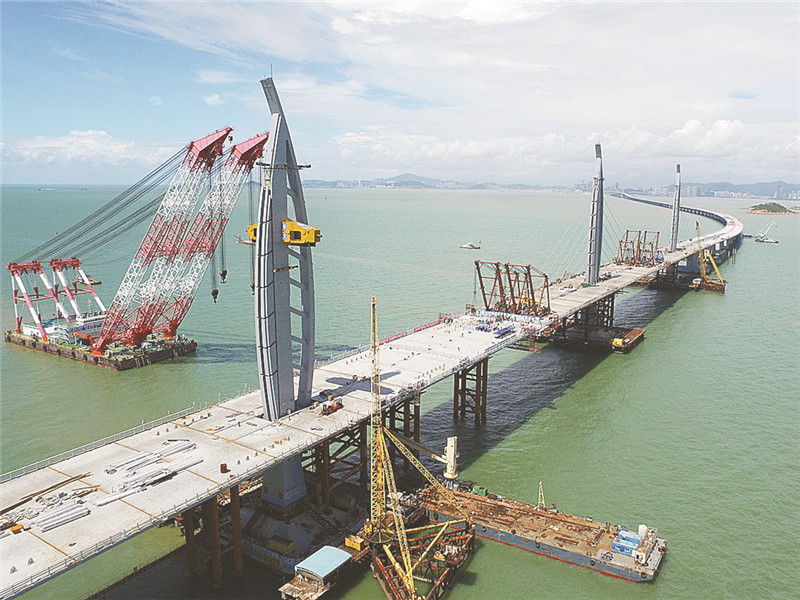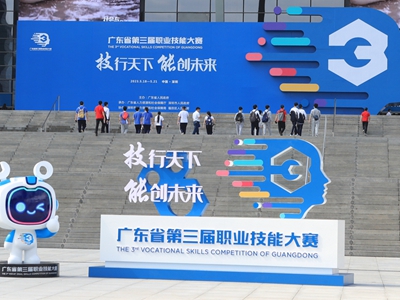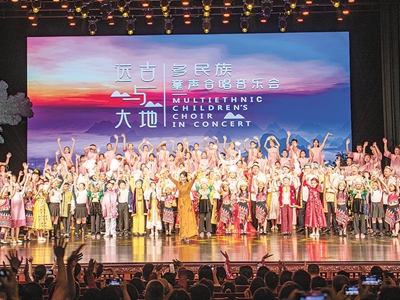Bay area initiative offers HK new opportunities
Writer:

An aerial photo taken June 29, 2016 shows the construction site of the main bridge parts of the Hong Kong-Zhuhai-Macao Bridge, the world’s longest cross-sea bridge, in Zhuhai, Guangdong Province. The bridge is expected to be completed by the end of this year. Xinhua
Hong Kong will gain new growth momentum with the emergence of the Guangdong-Hong Kong-Macao Greater Bay Area, an ambitious initiative aimed at boosting development of the Cantonese-speaking region in southern China, scholars and economic analysts say.
The Greater Bay Area is an updated version of the previous regional development initiatives, such as the Pearl River Delta and the Pan-Pearl River Delta, and it transcends regional divisions to highlight economic growth efficiency in the hub as a whole, said Andrew Fung, executive director of Hang Seng Bank.
The Greater Bay Area is a kind of natural, geological existence, which goes beyond administrative divisions, and it provides a vivid image, making it easier for policymakers to map growth strategies through comparing it with the world’s leading bay areas, such as Los Angeles, New York and Tokyo, said Ma Xufei, head of the Center for Entrepreneurship of the Chinese University of Hong Kong.
Ma said Shanghai has succeeded as a financial center by integrating with the Yangtze River Delta, a key manufacturing center in eastern China, linking its financial services with the real economy.
Another key manufacturing center, the Pearl River Delta in southern China, is within the reach of Hong Kong, Ma said, explaining that Hong Kong’s manufacturing chain is incomplete and its own market is small, but the weaknesses can be overcome through joining hands with the Pearl River Delta, which boasts a complete manufacturing chain and a large market.
Analysts believe the initiative will enable the cities included, namely Hong Kong, Macao, Guangzhou, Shenzhen, Zhuhai, Foshan, Zhongshan, Dongguan, Huizhou, Jiangmen and Zhaoqing, to further boost their strengths and complement each other in collaboration.
Hong Kong has advanced financial services and other professional services such as accounting, auditing and project management, while demand for such services is huge on the mainland, which is upgrading its manufacturing sector, Ma said.
The Hong Kong Special Administrative Region is endowed with a standard market system, mature legal system, advanced infrastructure equipment and relatively low tax rates, which will enable it to remain competitive in the coming years, said Ye Bingnan, an analyst with Bank of China International.
Hong Kong is well-placed in the finance and services sectors, Shenzhen is good at innovative technology and Guangzhou boasts leading colleges and research institutes, Ye said, noting different cities will build on their strengths in collaboration.
Foundation for such a proposed hub is solid. The region shares similar folk culture and the Cantonese dialect, which allows space for cultural and creative industries, said Witman Hung, president of Hong Kong’s Internet Professional Association.
The Hong Kong-Zhuhai-Macao Bridge, which is expected to complete construction by the end of this year, will cut the driving time remarkably between Hong Kong, Guangzhou, Zhuhai and Macao, and this is an impetus to greater integration of the region in the proposed hub, Hung said. (Xinhua)











